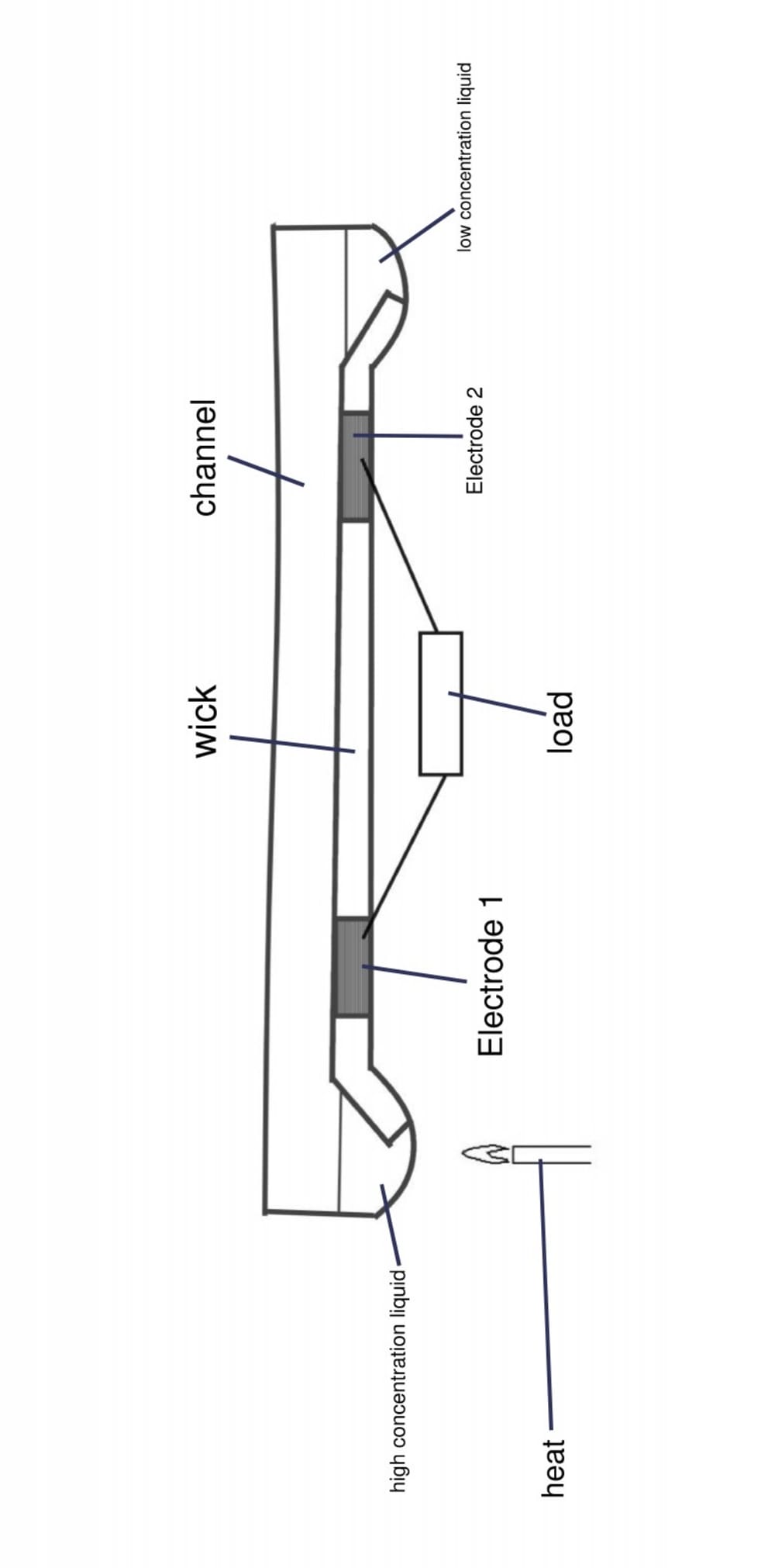I intend to make the production of electrical energy cheaper and less polluting. My invention is a heat pipe engine. A heat pipe has two ends, a wick and a channel for the vapor to flow between the two ends shown in figure 1. A high concentration liquid saturates the wick at one end. A low concentration liquid saturates the wick at the other end. The low concentration liquid will flow through the wick into the high concentration liquid. Within the wick are two electrodes 1 and 2. Electrode 1 is located in high concentration liquid, and electrode 2 is in the low concentration liquid. When heat is applied to the end with the high concentration liquid, some of the liquid will evaporate. The vapor passes through the tubing to the end with the liquid of low concentration. The end with the low concentration liquid is at a lower temperature, and the vapor condenses. The low concentration liquid passes over electrode 2 and through the wick to electrode 1. When the liquid of low concentration passes through the wick from the end of low concentration to end of high concentration, electricity flows through the load.
This system can use an ammonium water solution. However, many different solutions can be used, thus enabling the system to work over a wide range of temperatures.
Energy efficiency not only preserves natural resources and cuts down on greenhouse gasses, but also saves everyone money. In a furnace, the flame is used to heat a heat exchange. The heat exchanger is used to heat the air flowing through the supply duct. The heat pipe engine can replace the heat exchanger. Thus, the flame wound heat the heat pipe engine which would heat the air flowing through the supply duct. The heat pipe engine would also produce electrical energy. This would increase the efficiency since all the heat that is usually lost in the conversion of energy to electricity (approximately 40%) is recovered to heat the building. The electricity that is generated can be used on site. Thus, avoids line losses in long-distance transmission and electricity distribution costs.
The heat pipe engine is also less complex than other engines that produce electricity. This will enable the engine to be manufactured and maintained at less cost. The inexpensiveness of the engine will enable the engine to be used to produce electrical energy from sources that only have a small temperature difference between the source and the sink. These sources include geothermal energy, ocean thermal energy, many solar sources, waste heat from engines, waste heat from industrial processes, differentials between atmospheric temperature and ground temperature, etc. Very little of the energy from heat sources with small temperature differences is used because of the cost of the engines. The two engines used today are thermoelectric generators and Rankin engines. Thermoelectric generators are inefficient and expensive. Rankin engines are costly to produce and maintain due to their complexity. My engine is efficient and very inexpensive to manufacture and run.
Like this entry?
-
About the Entrant
- Name:Jerry Semer
- Type of entry:individual
- Patent status:pending

